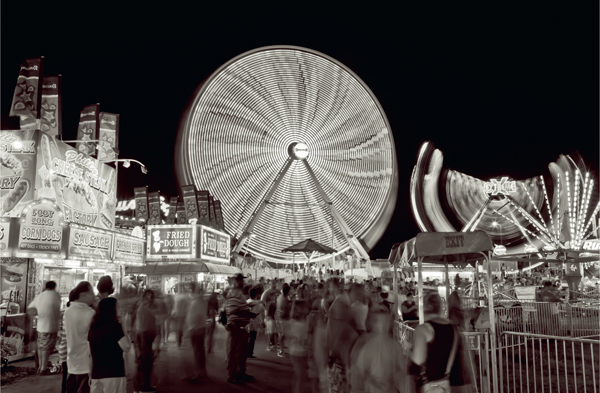CHAPTER 3
Long-Exposure Photography
With Christy Hydeck
CHRISTY’S HOT TIPS FOR LONG EXPOSURES
- Use a tripod! Because the shutter is open longer, any movement, no matter how slight, will affect the final image. Keeping your camera stabilized will result in a sharp, focused photograph.
- Set your camera to bulb mode and use a remote in addition to using the tripod. The remote will help eliminate any camera shake caused by pressing the shutter button. Bulb mode allows you to vary the amount of time your shutter is open. I find it is easier to switch up the shutter speeds this way and experiment with the times. I will test a 2-second exposure and compare it to a 5-second exposure, and so on, until I find the perfect length of time for the scene.
- Daytime long exposures can be just as fun! Waterfalls look particularly spectacular as the moving water becomes this misty, milky, magically smooth surface. You may need to use a strong neutral density filter over your lens to prevent the image from becoming blown out during the day.
- Another favorite long exposure technique of mine is to write and doodle with light. Using a flashlight or sparklers I’ll doodle in the air while the shutter is open, revealing just the words or images I drew with the light source. Since the strongest source of light will be picked up by the lens, my hand or arm will not affect the image as long as I keep moving. It takes a bit of practice to get it just right, but it sure is fun.
- Long exposures can come in handy while traveling. (Ever want a photo of a popular tourist spot without all the people?) Using a strong neutral density filter and a longer exposure time—I usually start at 15 seconds—you can often capture an image where the steady subject remains while the moving people are “erased” as a result.
The art of creating an image within my camera forces me to slow down a bit in life. It pushes me to examine and really look at my surroundings to find the beauty or the interesting in the mundane. That act alone, for me, has been life changing.
» Christy Hydeck
SUSAN’S TIPS FOR MOBILE LONG EXPOSURES
- Use a tripod made especially for your mobile phone (GorillaPod is one example) or a tripod mount that allows you to attach your phone to your regular DSLR tripod (I have a PED3)
- An iPhone has an entirely different mechanism for recording images. To create a “slow shutter speed shot,” the phone takes multiple photographs within a fixed time frame and essentially stacks them one over the other to make the image, giving it the look of a slow shutter speed shot. The more photos that are stacked on top of each other, the more motion progression you will see. Apps that will do this include AvgCamPro, AvgNiteCam and SlowShutter.

At the County Fair by Christy Hydeck - With bright lights, big crowds, rides and food galore – a county fair is the perfect place to bring your tripod, find a relatively quiet spot and set up your camera. Not only does the long exposure emphasize the moving lights of the carnival rides, it gives a ghostly effect to the hustle and bustle of the moving people. Converting the image to black and white helps to neutralize all the competing colors and allows the viewer’s eyes to focus on the mood of the evening. 24-70mm f/2.8 lens at 34mm, ISO 100, f/18 for 3 sec.

